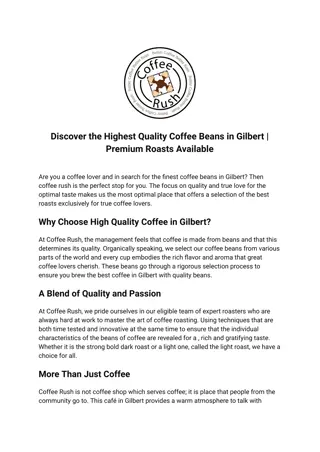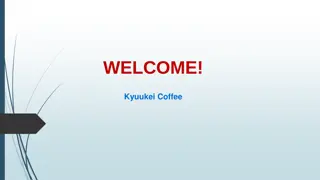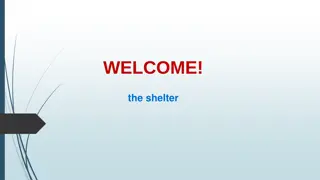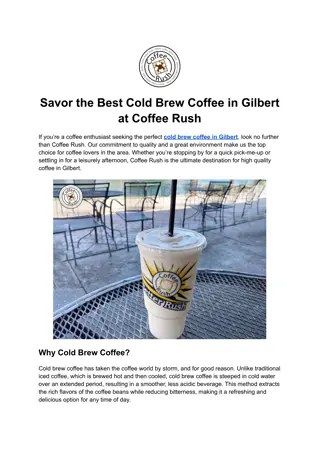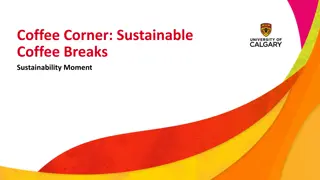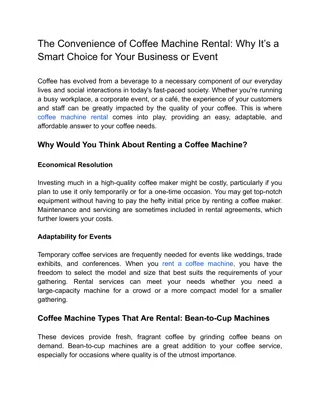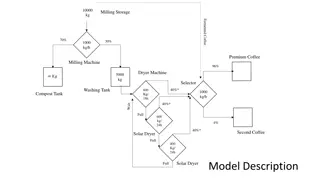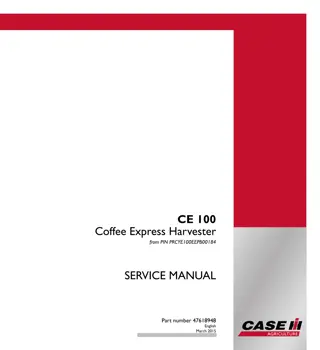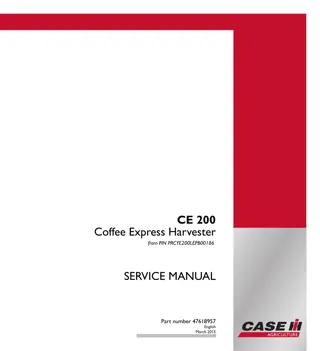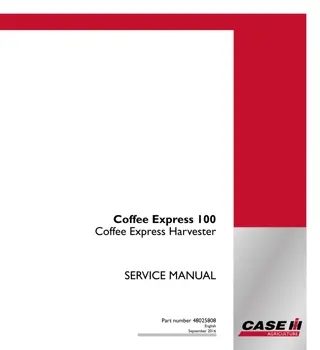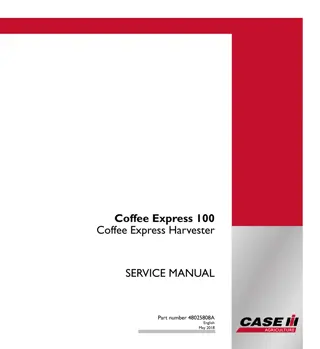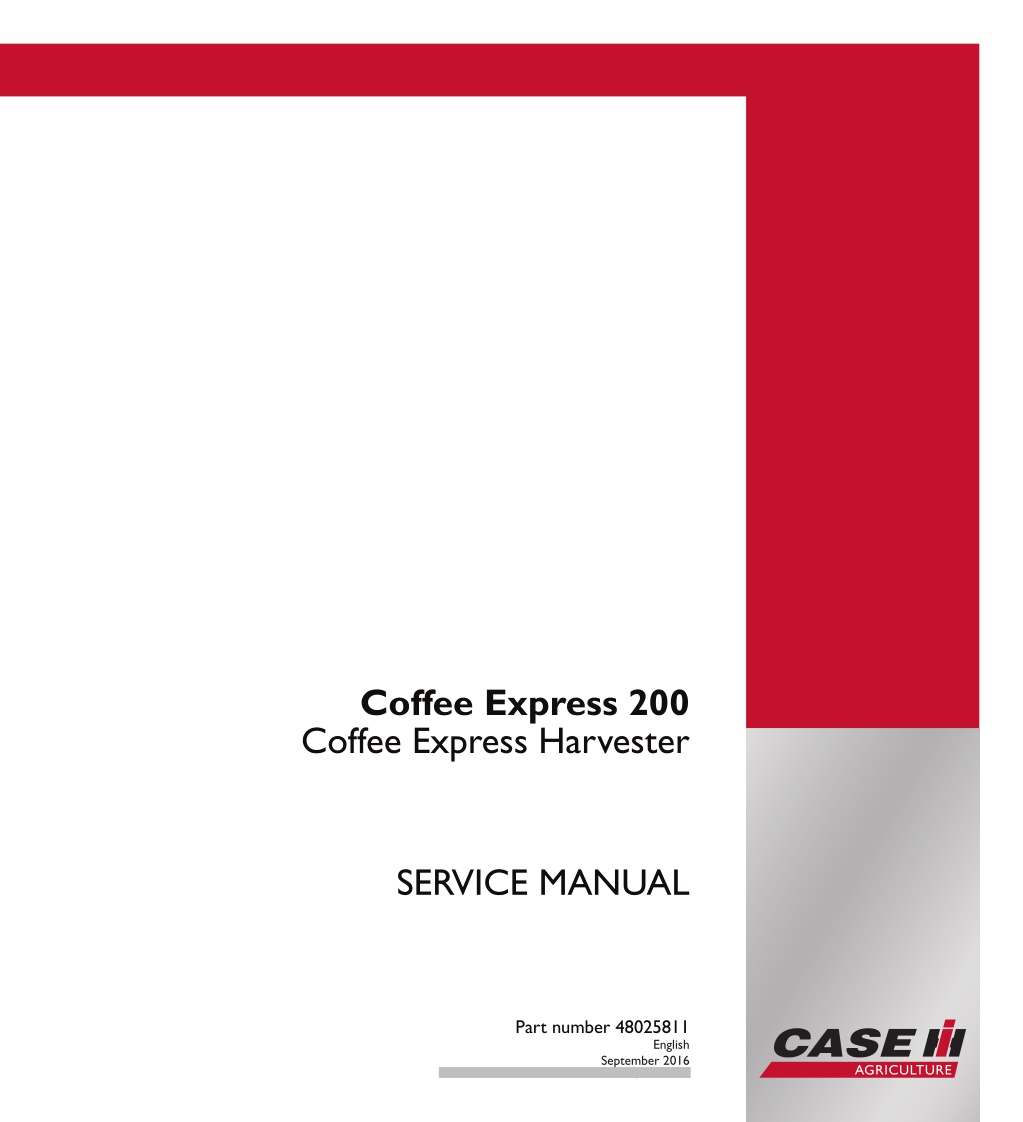
CASE IH Coffee Express 200 Coffee Express Harvester Service Repair Manual Instant Download (Part Number 48025811)
Please open the website below to get the complete manualnn//
Download Presentation

Please find below an Image/Link to download the presentation.
The content on the website is provided AS IS for your information and personal use only. It may not be sold, licensed, or shared on other websites without obtaining consent from the author. Download presentation by click this link. If you encounter any issues during the download, it is possible that the publisher has removed the file from their server.
E N D
Presentation Transcript
SERVICE MANUAL Coffee Express 200 Coffee Express Harvester Coffee Express 200 Coffee Express Harvester Part number 48025811 1/1 SERVICE MANUAL Part number 48025811 English September 2016 2016 CNH industrial Latin America LTDA. All Rights Reserved.
SERVICE MANUAL Coffee Express 200 Model year 2016 [PRCYE200AGPB00327 - ] 48025811 26/09/2016 EN
Contents INTRODUCTION Engine....................................................................................... 10 [10.001] Engine and crankcase ............................................................. 10.1 [10.210] Lift pump and lines ................................................................. 10.2 [10.206] Fuel filters .......................................................................... 10.3 [10.202] Air cleaners and lines .............................................................. 10.4 [10.216] Fuel tanks .......................................................................... 10.5 [10.400] Engine cooling system ............................................................. 10.6 [10.304] Engine lubrication system.......................................................... 10.7 Rear axle system........................................................................ 27 [27.120] Planetary and final drives .......................................................... 27.1 Hydraulic systems....................................................................... 35 [35.000] Hydraulic systems.................................................................. 35.1 [35.300] Reservoir, cooler, and filters........................................................ 35.2 Frames and ballasting................................................................. 39 [39.100] Frame .............................................................................. 39.1 Steering..................................................................................... 41 [41.216] Cylinders ........................................................................... 41.1 [41.200] Hydraulic control components...................................................... 41.2 Electrical systems....................................................................... 55 [55.000] Electrical system ................................................................... 55.1 [55.100] Harnesses and connectors......................................................... 55.2 [55.520] Cab harvesting controls............................................................ 55.3 Cleaning.................................................................................... 74 [74.000] Cleaning............................................................................ 74.1 48025811 26/09/2016
https://www.ebooklibonline.com Hello dear friend! Thank you very much for reading. Enter the link into your browser. The full manual is available for immediate download. https://www.ebooklibonline.com
Crop storage / Unloading............................................................. 80 [80.150] Grain tank .......................................................................... 80.1 Platform, cab, bodywork, and decals............................................. 90 [90.150] Cab................................................................................. 90.1 [90.110] Operator platform less cab ......................................................... 90.2 [90.118] Protections and footboards......................................................... 90.3 48025811 26/09/2016
INTRODUCTION 48025811 26/09/2016 1
Contents INTRODUCTION Advice (*) .......................................................................................3 International symbols (*) ........................................................................4 Foreword (*) ....................................................................................5 Advice (*) .......................................................................................6 Safety rules (*) ..................................................................................7 Safety rules (*) ................................................................................ 11 Safety rules (*) ................................................................................ 12 Safety rules (*) ................................................................................ 14 Safety rules (*) ................................................................................ 16 Torque (*) ..................................................................................... 20 Frame - Special tools (*) ...................................................................... 24 Consumables (*) .............................................................................. 35 (*) See content for specific models 48025811 26/09/2016 2
INTRODUCTION Advice LA --- Coffee Express 200 All repair and maintenance works listed in this manual must be carried out only by qualified dealership personnel, strictly complying with the instructions given, and using, whenever possible, the special tools. Anyone who carries out the services without complying with the procedures will be responsible for the subsequent damages In any case, no warranty is given or attributed on the product manufactured or marketed by CNH in case of damages due to anomalous behavior of parts or components not approved by CNH. The information in this manual is up-to-date at the date of the publication. CNH has the policy of continuous improve- ment. 48025811 26/09/2016 3
INTRODUCTION International symbols Coffee Express 200 As a guide to the operation of the machine, various universal symbols have been utilized on the instruments, controls, switches, and fuse box. The symbols are shown below with an indication of their meaning. Power Take-Off (PTO) Heater plug for cold start Turning signal Reaction control Alternator charging Transmission in neutral Accessories socket Activated memory Turn signals Implement socket Creeper selection Fuel level Turn signals - one trailer Low speed selection Automatic fuel shut-off Percentage slip Engine speed (rpm x 100) Raising of the hydraulic lift Turn signals - two trailers High speed selection Wind shield washer Road speed Hour meter Rear hitch lower Engine oil pressure Windscreen wash wipe Hydraulic lift height threshold Differential Lock Heating temperature control Engine coolant temperature Rear axle oil temperature Hydraulic lift disabled Transmission filters and hydraulic filters Transmission oil pressure Cab recirculation fan Coolant level Auxiliary Front Wheel Drive (AFWD) operated Remote control valve extension Machine lights Air conditioner Remote control valve command retraction Air Filter Restriction Warning! Main beam head Danger warning lights Remote control valve flotation Parking brake Low beam Malfunction! See Operator s Work lamps Variable control Brake fluid level Malfunction! (alternative symbol) Pressurized! Open carefully Stop lamp Trailer brake Warning! Corrosive substance Klaxon Position control Brake fluid level 48025811 26/09/2016 4
INTRODUCTION Foreword Coffee Express 200 Soil, air, and water are vital factors of agriculture and life in general. Where legislation does not yet rule the treatment of some of the substances which are required by advanced technology, common sense should govern the use and disposal of products of a chemical and petrochemical nature. The following are recommendations which may be of assistance: Become acquainted with and ensure that you understand the relative legislation applicable to your country. Where no legislation exists, obtain information from suppliers of oils, filters, batteries, fuels, antifreeze, cleaning agents, etc., with regard to their effect on man and nature and how to safety store, use and dispose of these sub- stances. Agricultural consultants will, in many cases, be able to help you as well. Helpful Hints Avoid filling tanks using unsuitable containers or inappropriate pressurized fuel delivery systems that may cause spillages. If you are exposed to or come in contact with hazardous chemicals you can be seriously injured. The fluids, lubri- cants, paints, adhesives, coolants, etc. required for the function of the machine can be hazardous. They may be attractive and harmful to domestic animals as well as humans. Dispose of all fluids, filters, and containers in an environmentally safe manner according to local laws and regula- tions. Check with local environmental and recycling centers or your dealer for correct disposal information. Store fluids and filter in accordance with local laws and regulations. Use only appropriate containers for the storage of chemicals or petrochemical substances. Modern oils contain additives. Do not burn contaminated fuels and/or waste oils in ordinary heating systems. Avoid spillage when draining off used engine coolant mixtures, engine, gear box and hydraulic oils, brake fluids, etc. Do not mix drained brake fluids or fuels with lubricants. Store them safely until they can be disposed of in a proper way to comply with local legislation and available resources. Modern coolant mixtures, i.e., antifreeze and other additives, should be replaced every two years. They should not be allowed to get into the soil but should be collected and disposed of safely. The air-conditioning system contains gases that are harmful to the environment when released into the atmosphere. Do not attempt to service or repair the system. Your dealer or air conditioning specialist has a special extractor for this purpose and will be able to recharge the system in any case. Repair any leaks or defects in the engine cooling or hydraulic system immediately. Do not increase the pressure in a pressurized circuit as this could cause the components to explode. Protect hoses during welding as penetrating weld splatter may burn a hole or weaken them, causing the loss of oils, coolant, etc. Keep chemicals out of reach of children or other unauthorized persons. Additional precautions are required for applied chemicals. Obtain complete information from the manufacturer or distributor of the chemicals before using them. 48025811 26/09/2016 5
INTRODUCTION Advice Coffee Express 200 Mandatory recycling The battery is essentially composed of lead plates and sulfuric acid solution. Since the battery contains heavy metals such as lead, CONAMA Resolution 401/2008 or- ders that all used batteries must be returned to the battery dealer at the time of replacement. Do not dispose of the battery in the garbage. Points of sale are obliged to ac- cept the return of your used battery, and to store it in a suitable place and return it to the manufacturer for recy- cling. Improper disposal of batteries can contaminate the soil, groundwater and waterways. The consumption of con- taminated water can cause high blood pressure, anemia, depression, weakness, leg pain, and drowsiness. Con- tact of the acid solution with eyes causes chemical con- junctivitis. Contact of the acid solution with skin causes contact dermatitis. In the case of accidental contact with theeyesorskin, immediatelywashwithrunningwaterand seek medical treatment. 1 CUIL13TRO0091AA 48025811 26/09/2016 6
INTRODUCTION Safety rules LA --- Coffee Express 200 Safety during maintenance Always keep safety and information decals clean and visible. Replace decals that are damaged, lost, painted over or cannot be read. When assembling, operating or servicing the machine, wear protective clothing and personal safety devices that are necessary for the particular procedure. Some safety equipments that may be necessary are protective shoes, face and/or eye protection, hard hat, heavy gloves, filter mask and hearing protection. DO NOT wear jewelry or loose fitting clothing that may get caught in moving parts. Always wear clothing that will not catch on objects. Keep hands, feet, clothing and hair away from moving parts. Never attempt to clear obstructions or objects from the machine while the engine is running. Always shut down the engine and remove the ignition key when leaving the operator s seat or machine or tractor. To carry out maintenance on the machine, always position it on a firm, level surface. When you remove or open guards for maintenance, always put them back before operating the machine. Never operate the machine with the guards opened, or without them. Keep the area used to maintenance clean and dry. Wet or oily floors are slippery. Wet spots can be dangerous when working with electrical equipment. Be sure all electrical outlets and tools are properly grounded. Safety against fire Fire risks can be minimized by the frequent cleaning of material accumulated from the harvest or residues from the machine. Remove daily material of the harvest or residues of the machine. Especially check the engine area and exhaust system. Engine fuel can cause an explosion or fire. DO NOT fuel the tank with the engine running, or if close to fire, welding, smoking, etc. Battery safety DO NOT CREATE sparks or flame next to the battery. When disconnecting battery terminals, remove the Negative (-) cable first; then remove the Positive (+). When connecting the cables, connect first the Positive (+), then the Negative (-). Disconnect the battery (both terminals) before welding on any part of the machine. Not taking this precaution can cause damage to sensitive electric components. BATTERY ACID CAUSES SERIOUS BURNS. Batteries contain sulfuric acid. Avoid contact with skin, eyes, or clothing. Antidote: EXTERNAL Flush with water. INTERNAL - Drink large quantities of water or milk. DO NOT induce vomiting. Seek medical attention immediately. EYES - Wash with water for 15 min and immediately seek a doctor. BATTERIES PRODUCE EXPLOSIVE GASES. Keep all open flames, sparks and cigarettes away. Ventilate when loading or using in enclosed space. Always use eye protection when working near batteries. Wash hands after handling. KEEP OUT OF REACH OF CHILDREN. When working near stored batteries, remember that exposed parts of metal are conductors. Never place a metal object on the terminals because it can cause a spark, short circuit, explosion or personal injury. Battery posts, terminals and other related accessories contain lead and lead compounds. Wash hands after han- dling. Safety in machine operation DO NOT allow other people to hitch a ride on the machine. They may fall or cause an accident. DO NOT operate the machine while under the influence of alcohol or drugs. Be alert and always know the location of all the workers in your area. Keep other people out of the way of your machine. Injury or death can result if you do not follow these instructions. 48025811 26/09/2016 7
INTRODUCTION Keep away of dangerous areas as ditches and inclines. Walk through the working location before starting and note the dangers. Hazardous chemicals Whether you are exposed or come into contact with dangerous chemical products, you can be seriously injured. The fluids, lubricants, paints, adhesives, coolants, etc., used in your machine can be hazardous. Material Safety Data Sheets (MSDS) provide information about the chemical substances within a product, safe handling procedures, first aid measures and procedures to be taken when the product is accidentally leaked. MSDS are available from your CASE IH dealer. Before carrying out maintenance or service on your machine, check MSDS for each fluid, lubricant, etc., used. This information indicates the risks and how to carry out the maintenance in a safe manner. Follow this information when servicing the machine. Before servicing in this machine and before discarding fluid and lubricants used, always remember the environment. DO NOT put oil or fluids into the ground or into containers that can leak. Check with the local authority of environmental protection or recycling, or with your dealer, the correct procedure for disposal. Safty Precautions Most farm machinery accidents can be avoided by observing a few simple precautions. To avoid accidents, read the instructions below carefully before you operate the harvester. Farm machinery should only be operated by responsi- ble, mature and skilled people. Operation The machine should be operated by trained personnel who are familiar with all the controls and techniques of the harvester and in fields with up to 15% of inclination. Operation of equipment you are not familiar with may lead to a serious accident. When driving on public roads: - Observe traffic regulations. - Adapt your speed to local conditions and ensure that all road lights are in perfect working order. Do not permit anyone other than the operator to ride on the harvester. Do not brake abruptly to avoid tipping of the machine. Before starting the engine, ensure everyone is clear of the harvester. Keep children away from and off the harvester at all times. Check daily the front and rear wheel tightening torques. Do not attempt to clean, lubricate or carry out any adjustments on the harvester while it is in motion or while the engine is running. Before leaving the cab, apply the parking brake and remove the starter switch key. Do not stand under the machine without using shims. Do not work around the machine in loose clothing that might catch in any of the moving parts. Keep hands away from moving parts of the machine Keep the loaded fire extinguisher within reach of the operator and inside the validity period. Do not try to go up over the cab. Engine Keep engine area clean of dust, trash and straw to prevent the possibility of fires. Never operate the harvester in an enclosed area without proper ventilation as the exhaust gases could cause death. Exercise care when removing the radiator cap while the engine is hot. If you cannot wait until the engine has cooled, cover the cap with a rag and turn it slowly to the first stop to allow the pressure to escape before removing the cap 48025811 26/09/2016 8
INTRODUCTION completely. NEVER add cold water to a hot radiator. In the event of loss of the expansion tank cover, always replace it with an original CASE IH cover. A non-approved cap may not be safe. The fuel oil in the injection system is under high pressure and fuel oil leaks can penetrate the skin. Do not attempt to remove or adjust a fuel injection pump, injectors or nozzles. Prolonged contact with used engine oil may affect your skin. Protect your skin by wearing rubber gloves. Be very careful to avoid contact with hot engine oil. If the engine oil is extremely hot, allow the oil to cool to a moderately warm temperature for safe removal. Do not handle a hot oil filter with bare hands. Fuel Never remove the tank cap nor fill it up while the engine is running or hot. Do not smoke or use a naked flame when refueling or when standing near fuel tanks. Do not fill the tank completely; allow some space for expansion. Wipe up spilled fuel immediately. Always keep the tank cap firmly tightened. If the cap is lost, replace it with a genuine CASE IH cap. A non-approved cap may not be safe. Never use fuel for cleaning purposes. Keep equipment clean and properly maintained. Do not drive the harvester near open fires. Keep the screen (filter) inside the filler neck during the fueling. Legal obligations The harvester may be fitted with guards and other devices in compliance with legislation. Some of these require active application by the operator. Moreover, check the local legislation about the use of harvesters. Fire extinguisher It is recommended to keep a fire extinguisher in the harvesters during operation to help extinguish starting fires. NOTICE: It is essential that the extinguishers receive adequate maintenance and that the operator receives instruc- tions of how to use it. Monthly checks 1. Check if the extinguisher is in the validity period. 2. Check if the pressure indicator is in the green band. 3. Check that the seals are intact. 4. Check if there is the INMETRO conformity mark. 5. Check if the durability and validity terms of the hydrostatic test are not expired. 6. Check if the external general appearance is in good condition (without any corrosion, dents and other damages). ATTENTION: If any of the items above are not correct, replace the extinguisher. Safty Precautions 1. Do not test the extinguisher, any use will cause pressure loss, making it inoperative. 2. Involuntary contact with residue of the extinguisher agent can to cause irritation to the skin, eyes and breathing passages. 3. If you are in physical discomfort, seek medical attention. 4. Contents under pressure. Never perforate, dent or expose it to flame, after discharged. 48025811 26/09/2016 9
INTRODUCTION Extinguisher specification CASE IH part number: 00943470 Extinguisher capacity: 2A: 20-B: C Fire class: ABC Charge: 4 kg Extinguishing agent: Monoammonium Phosphate Operation and use instructions The user should have minimum knowledge for the correct utilization of the product. The basic sequence of operation is shown in the instructions chart (label) of the extinguisher. The information to follow is complementary and can be used for users training: 1. Remove the extinguisher from the retaining bracket 2. Press the trigger and move the jet in an arc. If the fuel is liquid, do not apply the jet directly over the surface to avoid increasing the burning area. 3. When the fire is extinguished, be alert to a possible reigniting. Only ABC powders can provide reasonable assur- ance in preventing inflammable solids from reigniting. 4. Evacuate and ventilate the area. The smoke is always toxic and could cause irritation to the respiratory system or even lead to the loss of consciousness. ATTENTION: A. The discharge time of the powder type KIDDE extinguisher is small. Due to the short duration of the discharge, the operator should be alert regarding wasting extinguisher agent. B. Combating fires in liquid fuels (Class B) should be accomplished with continuous discharge of the spray. C. For solid fuels (Class A), depending on the proportions of the fire, the use of intermittent discharge may be nec- essary. 48025811 26/09/2016 10
INTRODUCTION Safety rules Coffee Express 200 Personal safety This is the safety alert symbol. It is used to alert you to potential personal injury hazards. Obey all safety messages that follow this symbol to avoid possible death or injury. Throughout this manual you will find the signal words DANGER, WARNING, and CAUTION followed by special in- structions. These precautions are intended for the personal safety of you and those working with you. Read and understand all the safety messages in this manual before you operate or service the machine. DANGER indicates a hazardous situation that, if not avoided, will result in death or serious injury. WARNING indicates a hazardous situation that, if not avoided, could result in death or serious injury. CAUTION indicates a hazardous situation that, if not avoided, could result in minor or moderate injury. FAILURE TO FOLLOW DANGER, WARNING, AND CAUTION MESSAGES COULD RESULT IN DEATH OR SERIOUS INJURY. Machine safety NOTICE: Notice indicates a situation that, if not avoided, could result in machine or property damage. Throughout this manual you will find the signal word Notice followed by special instructions to prevent machine or property damage. The word Notice is used to address practices not related to personal safety. Information NOTE: Note indicates additional information that clarifies steps, procedures, or other information in this manual. Throughout this manual you will find the word Note followed by additional information about a step, procedure, or other information in the manual. The word Note is not intended to address personal safety or property damage. 48025811 26/09/2016 11
INTRODUCTION Safety rules Coffee Express 200 Standard safety precautions Be informed and notify personnel of the laws in force regulating safety, and provide documentation available for consultation. Keep working areas as clean as possible. Ensure that working areas are provided with emergency boxes. They must be clearly visible and always contain adequate sanitary equipment. Fire extinguishers must be properly identified and always be clear of obstructions. Their efficiency must be checked on a regular basis and personnel must be trained on proper interventions and priorities. Keep all emergency exits free of obstructions and clearly marked. Smoking in working areas subject to fire danger must be strictly prohibited. Prevention of injury Wear suitable work attire and safety glasses with no jewelry such as rings and chains when working close to engines and equipment in motion. Wear safety gloves and goggles when performing the following operations: Topping off or changing lubrication oils. Using compressed air or liquids at a pressure greater than 2 bar (29 psi). Wear a safety helmet when working close to hanging loads or equipment working at head level. Always wear safety shoes and fitting clothes. Use protection cream for hands. Change wet clothes as soon as possible. In the presence of voltages exceeding 48 - 60 V, verify the efficiency of the ground and mass electrical connections. Ensure that hands and feet are dry and use isolating foot boards. Workers should be properly trained to work with electricity. Do not smoke or start an open flame close to batteries and any fuel material. Place soiled rags with oil, diesel fuel or solvents in specially provided anti-fire containers. Do not use any tool or equipment for any use other than what it was originally intended for. Serious injury may occur. If running an engine indoors, make sure there is a sufficient exhaust fan in use to eliminate exhaust fumes. During maintenance Never open the filler cap of the cooling system when the engine is hot. High temperature liquid at operating pressure could result in serious danger and risk of burn. Wait until the temperature decreases under 50 C (122 F). Never add coolant to an overheated engine and use only appropriate liquids. Always work when the engine is turned off. Certain circumstances require maintenance on a running engine. Be aware of all the risks involved with such an operation. Always use adequate and safe containers for engine fluids and used oil. Keep engine clean of any spilled fluids such as oil, diesel fuel, and or chemical solvents. Use of solvents or detergents during maintenance may emit toxic vapors. Always keep working areas aerated. Wear a safety mask if necessary. Do not leave soiled rags that may contain any flammable substances close to the engine. Always use caution when starting an engine after any work has been performed. Be prepared to cut off intake air in case of engine runaway. Never disconnect the batteries while the engine is running. 48025811 26/09/2016 12
INTRODUCTION Disconnect the batteries prior to performing any work on the equipment. Disconnect the batteries to place a load on them with a load tester. After any work is performed, verify that the battery clamp polarity is correct and that the clamps are tight and safe from accidental short circuit and oxidation. Before disconnecting any pipelines (pneumatic, hydraulic, fuel pipes, etc.), verify that all pressure has been re- leased. Take all necessary precautions bleeding and draining residual pressure. Always wear the proper safety equipment. Do not alter the lengths of any wires. Do not connect any electronic service tool to the engine electrical equipment unless specifically approved by CASE IH. Do not modify the fuel system or hydraulic system unless approved by CASE IH. Any unauthorized modification will compromise warranty assistance and may affect engine operation and life span. For engine equipped with an electronic control unit Do not weld on any part of the equipment without removing the control unit. Remove the in case of work requiring heating over 80 C (176 F). Do not paint the components and the electronic connections. Do not alter any data filed in the electronic control unit driving the engine. Any manipulation or alteration of electronic components will void engine warranty assistance and may affect the correct working order and life span of the engine. Respect of the Environment Respect of the environment should be of primary importance. Take all necessary precautions to ensure personnel's safety and health. Inform the personnel of the laws regarding the dispensing of used engine fluids. Handle batteries with care, storing them in a well ventilated environment and within anti-acid container. 48025811 26/09/2016 13
INTRODUCTION Safety rules Coffee Express 200 General safety regulations General Aspects Strictly follow repair and maintenance procedures. Do not wear rings, wrist watches, jewelry, accessories, unbuttoned items of clothing, unsecured clothing like ties, torn clothing, scarves, or open jackets or shirts with open zippers that could get caught in moving parts. Use ap- proved safety clothing, such as anti-slip footwear, sleeves, protective goggles, helmets, etc. Wear safety goggles with side shields when cleaning parts using compressed air. Worn or damaged cables and chains are not reliable. Do not use these elements in lifting or towing operations. Use regulation safety equipment, such as approved eye protection, helmets, clothes, sleeves, and special footwear whenever you are welding. All individuals near the welding process must use regulation eye protection. Never look at the welding arc without using suitable eye protection. Never perform any repairs on the machine if there is someone in the operator seat, except when the person is a qualified operator who is helping with the service to be performed. Never operate the machine or use accessories from a place other than the operator seat or next to the machine when operating the fender switches. Never perform any operations on the machine with the engine running, except when specifically instructed to do so. Shut down the engine and release all the pressure from the hydraulic circuits before removing covers, cases, valves, etc. You must conduct all repair and maintenance operations with the utmost care and attention. Disconnect the batteries and put warning labels on all of the controls to warn that the machine is being repaired. Lock the machine and all the equipment that you remove. Never check or fill the fuel tank or batteries or use starting fluid when you are smoking or near a naked flame, because these fluids are flammable. The fuel filling gun must remain in contact with the filler neck. Maintain the contact until the fuel stops flowing into the tank in order to avoid sparks caused by static electricity build-up. To transport a faulty machine, use a trailer or a low loader platform trolley, if available. To load and unload the machine from the mode of transportation, choose a flat area that offers firm support for the wheels of the truck or trailer. Securely fasten the machine to the platform of the trailer or truck, in accordance with the transporter s requirements. Always use hoist mechanisms with an appropriate capacity for lifting or moving heavy components. Chains must always be securely fastened. The fastening device must have sufficient capacity to support the in- tended load. It is prohibited for bystanders to be near the fastening position. The work area must always be clean and dry. Clean it immediately if any water or oil is spilled. Never use gasoline, diesel, or other flammable liquids for cleaning. Use only non-toxic solvents. Do not allow cloths soaked with oil or grease to accumulate because they can cause a fire risk. Always keep these cloths in a metal container. Starting Never start the engine in enclosed spaces that are not equipped with a suitable exhaust system or gas-extraction system. Never bring your head, body, arms, legs, feet, hands, or fingers close to fans or rotating belts. Engine Always loosen the radiator cap slowly before removing it, in order to dissipate the system pressure. You must top up the coolant with the engine stopped. Do not fill up the fuel tank when the engine is running. 48025811 26/09/2016 14
INTRODUCTION Never adjust the fuel injection pump when the machine is in motion. Never lubricate the machine when the engine is running. Electrical systems If it is necessary to use auxiliary batteries, you must connect the cables on both sides as follows: (+) to (+) and (-) to (-). Avoid causing the terminals to short circuit. The gas that the batteries release is highly flammable. During charging, leave the battery compartment open to improve ventilation. Avoid sparks and naked flames near the battery. Do not smoke. Do not charge the batteries in enclosed spaces. Always disconnect the batteries before carrying out any type of servicing on the electrical system. Hydraulic system A little fluid coming out of a small bore could be almost invisible, but strong enough to penetrate the skin. For this reason, never use your hands to check for leaks. Instead, use a piece of cardboard or wood. If any fluid penetrates your skin, seek medical assistance immediately. Failure to seek immediate medical assistance could result in serious infections or dermatitis. Always read the system pressure using suitable gauges. Wheels and tires Make sure that the tires are correctly inflated at the pressure specified by the manufacturer. Inspect the rims and tires regularly for any damage. Remain next to the tire when filling it with air. Onlycheckthepressurewhentheplatformisunloadedandthetiresarecold, inordertopreventinaccuratereadings caused by overpressure. Never cut or weld a rim with a full tire fitted. To remove the wheels, lock both the front and rear wheels of the machine. Lift the machine. Install stable and secure supports under the machine, as per the legislation in force. Deflate the tire before removing any objects that may be caught in the tire tread. Never inflate tires using flammable gases, as they could cause explosions and injure bystanders. Remove and install Lift and handle all heavy components using hoist devices of appropriate capacity. You must suspend the parts using suitable hooks and slings. Use the hoist eyes provided for this purpose. Be careful if there are any bystanders near the hoisted load. 48025811 26/09/2016 15
INTRODUCTION Safety rules LA --- Coffee Express 200 Health and safety precautions Many of the procedures involved in machine maintenance and repair services involve physical hazards and other health risks. This section lists some of these hazardous procedures and the materials and equipment associated with them. Acids and alkalis Avoid splashing into your eyes and nose, or onto your skin and clothing. Wear suitable sleeves and protective goggles. Irritate and corrode the skin, eyes, nose, and throat. Causes burns. Do not inhale the fumes. Adhesives and sealants These are highly flammable. You must store them in no smoking areas. Use applicators when possible or secondary containers. The containers must be labeled. Resin-based adhesives/sealants Skin contact could result in irritation, dermatitis, and the absorption of toxic or harmful chemicals through the skin. Splashes could cause eye injuries. Ensure that there is adequate ventilation and avoid contact with the skin and the eyes. Follow the manufacturer s instructions. Ensure that there is adequate ventilation as volatile harmful or toxic chemicals may be released. Anti-freeze These are highly flammable. You must store them in no smoking areas. Anti-freeze can be absorbed through the skin in toxic or harmful quantities. Ingesting anti-freeze can cause death and you must seek medical assistance immediately. Chemicals General You must always take care when using and handling chemicals such as solvents, sealants, adhesives, paints, foam resins, battery acids, anti-freeze, brake fluid, oils and greases. They may be harmful, toxic, corrosive, irritant, or highly flammable. They may also emit hazardous fumes or dust. Do Remove chemicals from skin and clothing as soon as possible after contact. Change very dirty clothes and make provision for cleaning them. Read and strictly adhere to the safety recommendations on the chemical containers. When working with chemicals, wash before breaks, and before eating, smoking, drinking, or using the bathroom. Keep work areas clean, organized, and free of spillages. Store according to local and national legislation. Keep chemicals out of the reach of children. Do not Do not mix chemicals, except in accordance with the manufacturer's instructions. Some substances could form other chemical substances that are toxic or harmful, emit toxic or harmful fumes, or become explosive after mixing. Do not spray chemicals, especially solvent-based chemicals, in enclosed spaces. Do not apply heat or flames to chemicals, except in accordance with the manufacturer's instructions. Some are highly flammable or could release toxic or harmful fumes. 48025811 26/09/2016 16
INTRODUCTION Do not leave containers open. The fumes emitted could accumulate in toxic, harmful, or explosive concentrations. Some fumes are heavier than air and will accumulate in confined areas, trenches, etc. Do not put chemicals in un- marked containers. Do not clean your hands or clothes with chemicals. Chemicals, particularly solvents and fuels, dry out the skin and can cause irritation and dermatitis. Some can be absorbed through the skin in toxic or harmful quantities. Do not use empty containers to store other chemicals, except when they have been cleaned under supervision. Do not attempt to sniff or inhale chemicals. Rapid exposure to high concentrations of fumes can be toxic or harmful. Anti-corrosive protective material These materials are varied and you must follow the manufacturers' instructions. They may contain solvents, resins, petroleum derivatives, etc. You must avoid contact with the skin and the eyes. You must carry out spraying with adequate ventilation and never in enclosed spaces. Post Dust, powders, or clouds may be irritant, harmful, or toxic. Avoid inhaling the chemical powders or dusts that result from dry abrasion services. Use respiratory protection if ventilation is not adequate. Electric shock Electric shocks result from the use of faulty electrical equipment or from incorrect use. You must keep electrical equipment in good condition and test it frequently. Electrical equipment must be protected by a fuse with an appropriate nominal capacity. Use low-voltage equipment ( 110 volt) for work lights and inspection lights, wherever possible. Use pneumatic equip- ment instead of electrical equipment wherever possible. In the event of electrocution: Turn off the electricity before approaching the victim. If that is not possible, push or pull the victim away from the source of the electricity using a dry, non-conductive material. If you have been trained, start giving first aid. Seek medical assistance. Exhaust fumes These fumes contain asphyxiating, toxic or harmful chemical substances. You must only run engines in adequate extraction or general ventilation conditions, and never in enclosed spaces. Fiber insulation The fibrous nature of cut surfaces and edges can cause skin irritation. In general, the effect is physical and not chemical. You must take precautions to avoid excessive skin contact. Take care when organizing your work methods. Wear sleeves. Fire Many materials relating to vehicle repair are highly flammable. Some release toxic or harmful fumes when burned. Scrupulously observe the fire prevention safety recommendations when storing and handling flammable materials or solvents, particularly in the vicinity of electrical equipment or welding processes. Before using any electrical or welding equipment, ensure that there is no risk of fire. Always have an appropriate fire extinguisher nearby when using welding or heating equipment. 48025811 26/09/2016 17
Suggest: For more complete manuals. Please go to the home page. https://www.ebooklibonline.com If the above button click is invalid. Please download this document first, and then click the above link to download the complete manual. Thank you so much for reading
INTRODUCTION Foams Polyurethane See fire. Used for soundproofing. Cured foams used in seat cushions and finishes. Follow the manufacturer s in- structions. Components that have not reacted are irritants and could be harmful to the eyes and the skin. Wear sleeves and protective goggles. Individuals with chronic respiratory illnesses, asthma, bronchial problems, or a history of allergic illnesses must not work with or be in proximity to uncured materials. Components, fumes, and aerosol clouds can cause irritation and sensitization reactions, and may be toxic or harmful. You must apply these materials with adequate respiratory protection and adequate ventilation. Do not remove the respirator when you have finished spraying. Keep the respirator on until the fumes and clouds disperse. Burning uncured components and cured foams can generate toxic and harmful fumes. Do not permit smoking, the presence of naked flames, or the use of electrical equipment during the application of foam, and until the fumes/ clouds have dispersed. The hot cutting of cured or partially cured foam must be performed in an environment with a ventilation system with extraction. Kerosene (Paraffin) Ingesting kerosene can cause irritation to the mouth and throat. The greatest danger from ingesting kerosene is the possibility of breathing it into the lungs. Liquid contact dries the skin and can cause irritation or dermatitis. Splashes on the skin and in the eyes cause mild irritation. Avoid contact with the eyes and the skin as far as possible and ensure that there is adequate ventilation. Fuel oil (diesel fuel) When the quantities are large or the exposure period is long, skin contact with fuel oils with a high boiling point can cause serious skin diseases, including skin cancer. Gas cylinders See fire. In general, gases, such as oxygen, carbon dioxide, argon, and propane, are stored in cylinders with pres- sures of up to 140 bar ( 2000 lb/in2). You need to take sufficient care when handling them to prevent physical damage to the cylinders and the valve accessories. The content of each cylinder must be clearly identified with suitable labels. You must store the cylinders in a well-ventilated room, protected from ice, rain, and direct sunlight. You must not store combustible gases near to oxygen cylinders. Be careful to prevent leaks from the cylinders and the gas lines, and to avoid ignition sources. Only qualified personnel may perform services using the cylinders. General workshop equipment and tools You must keep all equipment and tools in good condition and you must use the correct safety equipment whenever necessary. Never use tools or equipment for any purpose other than that for which they are intended. Never overload equipment such as hoists, jacks, chassis bases and axles, or hoisting slings. The damage caused by overloading does not always appear immediately and could cause a fatal accident the next time that the equipment is used. Do not use faulty or damaged equipment or tools, particularly high-speed equipment, such as emery wheels. A dam- aged emery wheel can disintegrate suddenly and cause serious injury. Use protective goggles whenever you use equipment for grinding, cutting, polishing, or sandblasting. Oil test equipment, lubrication test equipment, and high-pressure air test equipment, in accordance with local legislation Always keep high-pressure equipment in good condition and carry out regular maintenance, particularly on connec- tions and fittings. Never point a high-pressure nozzle at the skin as the fluid can cause serious injuries. 48025811 26/09/2016 18
INTRODUCTION Legal aspects Various laws and regulations lay down the health and safety requirements for working with materials and equipment in workshops. Always observe the regulations and laws in force in the country in which you are working. Workshops must comply with the relevant regulations and laws. Consult the local supervisory authorities or related government bodies if you are in any doubt. Lubricants and greases Avoid prolonged or recurrent contact with mineral oils, particularly used oils. Thoroughly wash the skin after tasks using oil. Do not use gasoline, paraffin, or other solvents to remove oil from the skin. Lubricants and greases can cause mild eye irritation. You must avoid repeated or prolonged skin contact by wearing protective clothing where necessary. Do not allow your work clothes to become contaminated with oil. Wash or dry clean work clothes regularly. Discard oil-soaked shoes. Do not use used engine oil as a lubricant or for applications where it might come into contact with the skin. Paints You should preferably perform spraying in a ventilated cab with an exhaust system to remove the fumes and spray from the breathing area. Individuals working in cabs must use respiratory protection. Personnel carrying out small- scale repair work must use respirators with an air supply. Solvents Contact dries out the skin, and prolonged or recurrent contact can cause irritation and dermatitis. Some can be absorbed through the skin in toxic or harmful quantities. Splashes into the eyes can cause serious irritation and even lead to blindness. Wear protective sleeves, protective goggles and protective clothing. Ensure that there is good ventilation during use, avoid inhaling smoke, fumes, and spray clouds, and keep containers securely closed. Do not use in enclosed spaces. Do not apply heat or flame, except in accordance with specific and detailed instructions from the manufacturer. Arc welding This process emits a high level of ultraviolet radiation that can burn the eyes and skin of the welder and of other people nearby. Gas-protected welding processes are particularly dangerous in this respect. Personal protection is mandatory. Barriers to protect other people are also necessary. You also need to use suitable eye and skin protection because of metal splashes. The heat of arc welding will produce gases and fumes from the metals that are being melted, and from the coatings applied to or contamination on the worked surfaces. These gases and fumes may be toxic and you must avoid inhaling them. You may need to use ventilation with extraction to remove smoke from the work area, particularly in cases where there is not enough general ventilation or in places where a considerable amount of welding is expected to take place. In extreme cases, where adequate ventilation cannot be guaranteed, you may need to use respirators with an air supply. 48025811 26/09/2016 19
https://www.ebooklibonline.com Hello dear friend! Thank you very much for reading. Enter the link into your browser. The full manual is available for immediate download. https://www.ebooklibonline.com





